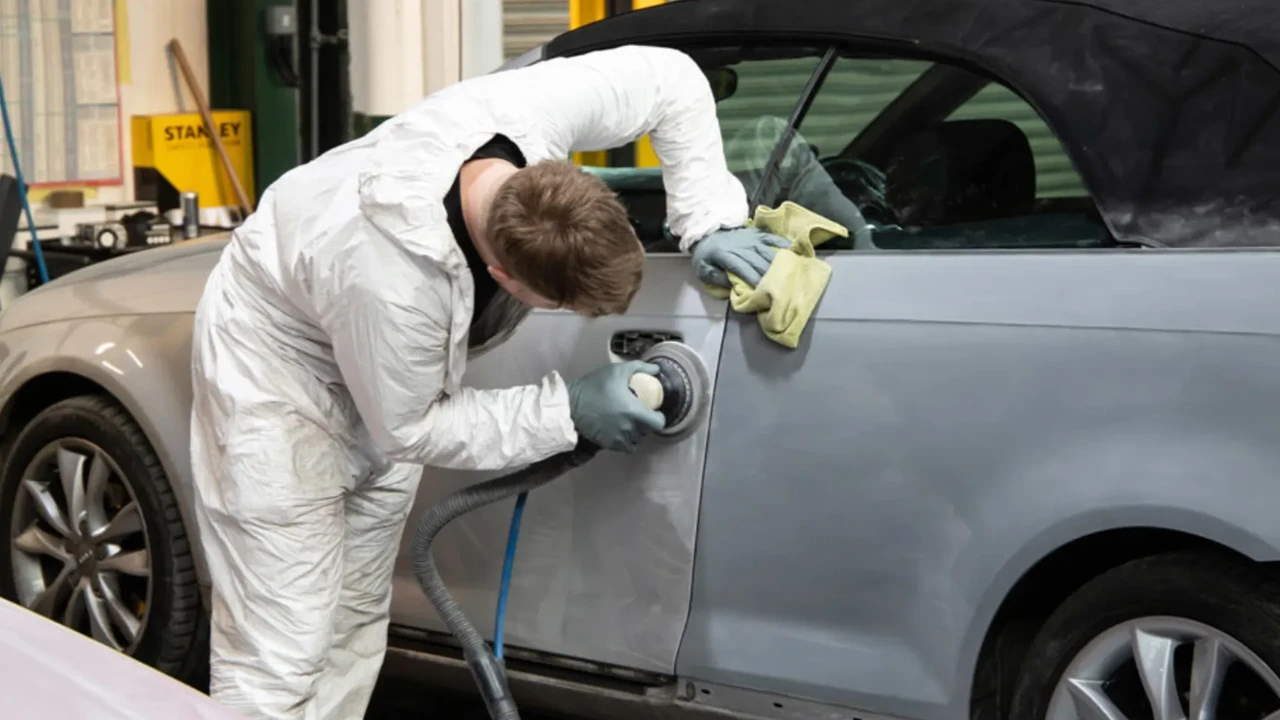Telematics Programs: Save Money with Safe Driving

Understanding Telematics Car Insurance Programs and Safe Driving Savings
Alright, let's talk about saving money on car insurance. We all want to do that, right? One way that's been gaining traction is through telematics programs. What are they? Basically, it's technology that tracks your driving habits and gives your insurance company data. And if you're a safe driver, that data can translate into some serious savings. Think of it as a report card for your driving, except instead of a gold star, you get a lower premium. Pretty cool, huh?
Telematics programs, sometimes called usage-based insurance (UBI), use devices – either plugged into your car or accessed via a smartphone app – to monitor things like:
- Speed: Are you consistently speeding or staying within the limits?
- Hard braking: How often do you slam on the brakes? Frequent hard braking can indicate aggressive driving.
- Acceleration: Similar to braking, rapid acceleration suggests risky driving behavior.
- Mileage: How much are you driving overall? Less driving often means less risk of accidents.
- Time of day: Driving late at night or during rush hour is generally considered riskier.
- Cornering: How sharply are you taking turns?
- Distracted Driving: Some advanced systems can even detect phone use while driving.
The insurance company then uses this data to assess your risk and adjust your premium accordingly. The safer you drive, the bigger the discount you can potentially get.
Benefits of Using Telematics for Car Insurance Savings and Safe Driving Practices
So, what are the actual benefits of hopping on the telematics bandwagon? Besides the obvious money-saving aspect, there are a few other perks:
- Lower Premiums: This is the big one! If you're a good driver, you can significantly reduce your car insurance costs. Discounts can range from a few percentage points to upwards of 30% or even more, depending on the insurer and your driving habits.
- Improved Driving Habits: Knowing that you're being monitored can actually make you a safer driver. You might be more conscious of your speed, avoid hard braking, and generally be more careful behind the wheel. It's like having a driving coach in your pocket!
- Personalized Feedback: Many telematics programs provide feedback on your driving habits, highlighting areas where you can improve. This can be incredibly valuable for identifying and correcting risky behaviors you might not even be aware of.
- Potential for Rewards: Some insurance companies offer rewards programs in addition to discounts. These might include gift cards, merchandise, or other incentives for safe driving.
- Theft Recovery: Some telematics devices also offer vehicle tracking, which can be helpful in the event of theft.
Popular Car Insurance Telematics Programs A Comparison for Safe Driving Discounts
Okay, so which telematics programs are out there? Here are a few popular options, along with some details about how they work:
- Progressive Snapshot: Snapshot is one of the most well-known telematics programs. It uses a plug-in device that you connect to your car's OBD-II port (usually located under the dashboard). It tracks your driving habits for a period of time (typically six months) and then calculates your discount based on your performance. Snapshot focuses heavily on hard braking and time of day. Keep in mind that while you can save money with Snapshot, your rate can also increase if your driving is deemed risky.
- State Farm Drive Safe & Save: Drive Safe & Save uses a smartphone app to track your driving. It monitors things like speed, hard braking, acceleration, and cornering. State Farm offers an initial discount just for signing up, and then your final discount is determined based on your driving data. Like Snapshot, your rate could potentially increase if your driving is poor.
- Allstate Drivewise: Drivewise also uses a smartphone app to track your driving. It monitors speed, hard braking, and time of day. Allstate offers rewards points for safe driving, which can be redeemed for discounts on Allstate products and services. Drivewise is generally considered to be a more forgiving program than some others, as it's less likely to increase your rate based on poor driving.
- Liberty Mutual RightTrack: RightTrack offers both a plug-in device and a mobile app option. It monitors driving behaviors like hard braking and acceleration, nighttime driving, and mileage. Liberty Mutual advertises that participants can save up to 30% on their premiums.
- USAA SafePilot: Available to USAA members, SafePilot uses a mobile app to track driving behavior, focusing on hard braking, acceleration, phone usage while driving, and time of day. It offers an upfront discount for enrolling and potential savings based on driving performance.
Choosing the Right Telematics Program for Your Safe Driving Needs and Budget
So, how do you choose the right telematics program for you? Here are a few things to consider:
- Your Driving Habits: Be honest with yourself about your driving habits. If you know you tend to speed or brake hard, a telematics program might not be the best fit. However, if you're a generally safe driver, you could potentially save a lot of money.
- The Insurance Company's Policies: Each insurance company has its own specific rules and guidelines for its telematics program. Make sure you understand the terms and conditions before signing up. Pay close attention to whether your rate could increase based on your driving data.
- Privacy Concerns: Telematics programs collect a lot of data about your driving habits. If you're concerned about privacy, make sure you understand how the insurance company uses and protects your data. Read the privacy policy carefully.
- Technology Preferences: Do you prefer a plug-in device or a smartphone app? Some people find plug-in devices more convenient, while others prefer the ease of use of a smartphone app.
- Potential Savings: Compare the potential savings offered by different programs. Some programs offer higher discounts than others. Keep in mind that the actual savings you receive will depend on your individual driving habits.
Telematics Car Insurance Device Installation and Usage for Safe Driving Monitoring
Okay, let’s dive into the nitty-gritty of how these telematics programs actually work, focusing on the hardware and the experience.
Plug-in Devices: The Onboard Guardian
For programs like Progressive’s Snapshot (and some others), you’ll receive a small device that plugs into your car’s OBD-II port. This port is usually located under the dashboard, near the steering wheel. It's the same port mechanics use to diagnose issues with your car. Installation is usually super easy – just plug it in! The device will then start collecting data about your driving. Here’s what you need to know:
- Installation: It’s generally a plug-and-play process. The insurance company will provide instructions. If you’re unsure, you can usually find helpful videos online.
- Data Collection: The device monitors speed, hard braking, acceleration, time of day, and mileage. Some more advanced devices might even track things like cornering.
- Data Transmission: The device transmits the data to the insurance company, either wirelessly or when you unplug it and connect it to your computer.
- Privacy: The data collected is generally used for insurance purposes only. However, it’s always a good idea to read the insurance company’s privacy policy to understand how your data is being used.
- Device Removal: Once the monitoring period is over (usually six months), you’ll need to unplug the device and return it to the insurance company. They’ll provide instructions on how to do this.
Smartphone Apps: The Mobile Driving Companion
Programs like State Farm’s Drive Safe & Save and Allstate’s Drivewise use a smartphone app to track your driving. This means you don’t need to install any special hardware in your car. Here’s how it works:
- Installation: You’ll download the app from the App Store or Google Play and create an account.
- Permissions: The app will ask for permission to access your location data, motion sensors, and other features on your phone. This is necessary for it to track your driving.
- Data Collection: The app uses your phone’s sensors to monitor speed, hard braking, acceleration, and time of day. Some apps can even detect distracted driving by monitoring phone usage while driving.
- Data Transmission: The app automatically transmits the data to the insurance company.
- Battery Life: Keep in mind that running a telematics app can drain your phone’s battery. You might need to charge your phone more frequently.
- Privacy: As with plug-in devices, it’s important to read the insurance company’s privacy policy to understand how your data is being used.
Telematics and Car Insurance Pricing Factors Affecting Safe Driving Discounts
Let's get real about the money. How do telematics programs actually affect your insurance premium? It's not as simple as "drive safe, get discount." Several factors come into play.
- Base Rate: Your initial insurance quote is still based on traditional factors like your age, driving history, vehicle type, and location. Telematics discounts are applied *on top* of this base rate.
- Driving Score: The insurance company calculates a driving score based on the data collected by the telematics device or app. This score is the primary determinant of your discount.
- Discount Range: Each program has a specific discount range. For example, you might see advertised savings "up to 30%." Your actual discount will fall somewhere within that range based on your driving score.
- Minimum Requirements: Some programs have minimum requirements for participation. For example, you might need to drive a certain number of miles or participate for a certain period of time to be eligible for the full discount.
- Rate Increases: This is important! Some programs *can* increase your rate if your driving is deemed risky. Make sure you understand the program's policy on rate increases before signing up.
- Renewal Rates: Telematics discounts may not be permanent. Your discount may be recalculated at each renewal based on your most recent driving data.
Specific Telematics Car Insurance Product Recommendations and Safe Driving Applications
Okay, let's get specific and look at some real-world examples of how telematics programs work and how much they can potentially save you. Remember, these are just examples, and your actual results may vary.
Progressive Snapshot: Case Study
Let's say you're a 35-year-old driver with a clean driving record. You get a base insurance quote from Progressive for $1200 per year. You decide to enroll in Snapshot. After six months of monitoring, Snapshot determines that you're a safe driver. You rarely brake hard, you don't drive late at night, and you stay within the speed limit. Progressive rewards you with a 20% discount. That's a savings of $240 per year!
However, let's say you're a more aggressive driver. You frequently brake hard, you often speed, and you drive late at night. Snapshot determines that you're a risky driver. In this case, Progressive might *increase* your rate by 5%. That's an increase of $60 per year.
State Farm Drive Safe & Save: Real-World Application
Imagine you're a college student who doesn't drive very often. You get a base insurance quote from State Farm for $800 per year. You enroll in Drive Safe & Save. Because you don't drive very much, and when you do, you drive safely, State Farm rewards you with a 15% discount. That's a savings of $120 per year!
On the other hand, let's say you're a rideshare driver who drives long hours, often at night. Drive Safe & Save determines that you're a high-risk driver. In this case, State Farm might increase your rate by 10%. That's an increase of $80 per year.
Product Comparison: Snapshot vs. Drivewise
Let's compare two popular telematics programs: Progressive Snapshot and Allstate Drivewise.
- Data Collection: Snapshot uses a plug-in device, while Drivewise uses a smartphone app.
- Factors Monitored: Both programs monitor speed, hard braking, and time of day. Drivewise also monitors mileage.
- Discount Potential: Both programs offer potential discounts of up to 30%.
- Rate Increases: Snapshot *can* increase your rate based on poor driving. Drivewise is generally considered to be more forgiving and less likely to increase your rate.
- Rewards: Drivewise offers rewards points for safe driving, which can be redeemed for discounts on Allstate products and services. Snapshot does not offer rewards points.
Which one is right for you? If you're confident in your driving skills and don't mind the possibility of a rate increase, Snapshot might be a good choice. If you're more concerned about privacy or want a program that's less likely to increase your rate, Drivewise might be a better option.
Telematics Car Insurance Data Privacy and Security Considerations for Safe Driving Tracking
Let's address the elephant in the room: privacy. Giving an insurance company access to your driving data can feel a little…invasive. So, what are the privacy and security considerations you need to be aware of?
- Data Collected: Telematics programs collect a lot of data, including your location, speed, braking habits, and time of day. This data can be used to create a detailed profile of your driving behavior.
- Data Usage: Insurance companies typically use this data to assess your risk and calculate your discount. However, they may also use it for other purposes, such as fraud detection and claims processing.
- Data Security: It's important to understand how the insurance company protects your data from unauthorized access. Look for companies that use encryption and other security measures.
- Data Sharing: Find out if the insurance company shares your data with third parties. Some companies may share data with marketing partners or other service providers.
- Privacy Policy: Read the insurance company's privacy policy carefully to understand how your data is being used and protected.
- Control Over Data: Some telematics programs allow you to access and review your driving data. This can give you more control over your privacy.
The Future of Telematics Car Insurance and Autonomous Safe Driving Technologies
Telematics is constantly evolving, and the future looks bright (and perhaps a little scary). Here's a glimpse into what's coming down the road:
- More Sophisticated Data: Telematics systems are becoming more sophisticated, collecting more data and providing a more detailed picture of your driving behavior. This could lead to more personalized insurance rates.
- Integration with Autonomous Vehicles: As autonomous vehicles become more common, telematics will play an increasingly important role in insurance. Telematics data will be used to assess the safety and reliability of autonomous driving systems.
- Predictive Analytics: Insurance companies are using telematics data to develop predictive models that can forecast accidents and identify high-risk drivers. This could lead to more proactive safety measures.
- Real-Time Feedback: Future telematics systems may provide real-time feedback to drivers, alerting them to potential hazards and helping them avoid accidents.
- Gamification: Some companies are exploring gamification techniques to encourage safe driving. This could involve rewarding drivers with points or badges for good behavior.
Telematics programs can be a great way to save money on car insurance if you're a safe driver. Just be sure to weigh the potential benefits against the privacy concerns and understand how the program works before signing up. Do your research, compare different options, and choose the program that's right for you. And remember, safe driving is always the best policy – both for your wallet and your well-being!
:max_bytes(150000):strip_icc()/277019-baked-pork-chops-with-cream-of-mushroom-soup-DDMFS-beauty-4x3-BG-7505-5762b731cf30447d9cbbbbbf387beafa.jpg)






